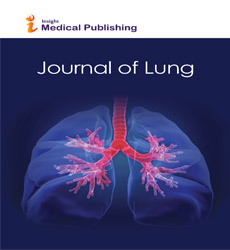Black Carbon as a Second Indicator of Negative Health Effects in Cities
Abstract
Problem statement: Continuous personal monitoring is a benchmark for assessing exposure to air pollution. European air-quality standards for particulate matter (PM) use mass concentration of PM (PM with aerodynamic diameters ≤ 10 μm (PM10) or ≤2.5 μm (PM2.5)) as the metric. It would be desirable to use if black carbon (BC) can be as a better and newer indicator than PM10 and PM2.5. For these objectives it is necessary to implement social, environmental and clinical data by developing real-time laboratories on an urban scale. This research discusses the integrated approach of three pilot studies developed in the city of Turin (Italy) which involved the resident population and some volunteers with Chronic obstructive pulmonary disease (COPD) respiratory disease.
Methodology and Theoretical Orientation: The Living Lab developed in Turin was organized in three pilot studies (LL). LL#1 involved 15 volunteer citizens residing in Turin who were observed and monitored for a week in November 2021. The aim was to collect information on the exposure of citizens at the neighborhood scale to superimpose the information in real-time to those collected by the regional monitoring network. LL#2 monitored (October 2020-October 2021) the respiratory parameters of 50 male volunteers suffering from mild COPD and residing in areas with different traffic densities. More precisely, 25 volunteers resided in high-traffic areas and 25 in low-traffic areas. LL#2 allowed us to investigate the associations between PM, BC and forced expiratory volume in the 1st second (FEV1). Finally, LL#3 developed a social survey on over 300 Turin citizens who participated in a semi-structured questionnaire on urban air quality and their behaviors adopted in favor of urban air quality. Each seemingly different LL is interconnected by a common denominator: data collected by users, such as active human sensors, provide information to be integrated into the management of air quality regulatory policies at the local level.
Results: A total of 8640 eBC measurements were obtained during LL#1 with an average daily personal exposure of 3.1 µg/m3 (±SD 1.3). The change in movement patterns and the variability of microenvironments were decisive determinants of exposure. LL#2 showed that high traffic density is significantly associated with lower forced expiratory volume in 1 s (FEV1) and forced vital capacity (FVC). The results from LL#2 highlight that people with persistent respiratory symptoms and residing in busier areas appear to be more vulnerable to BC exposure and have greater nocturnal dyspnea.
Conclusion and Meaning: Preliminary results highlight the potential utility of Living Labs for innovative approaches to design an urban-scale air quality management plan that also includes BC as a new indicator to protect human health.
Open Access Journals
- Aquaculture & Veterinary Science
- Chemistry & Chemical Sciences
- Clinical Sciences
- Engineering
- General Science
- Genetics & Molecular Biology
- Health Care & Nursing
- Immunology & Microbiology
- Materials Science
- Mathematics & Physics
- Medical Sciences
- Neurology & Psychiatry
- Oncology & Cancer Science
- Pharmaceutical Sciences
